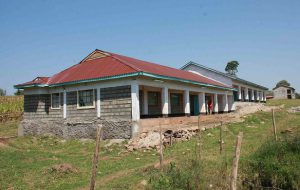The other day, I was searching through the TED Talks website and came across the video A Girl Who Demanded School featuring Kakenya Ntaiya that truly inspired me.
Kakenya grew up in a small village of the Maasai tribe in Kenya. When she was just 5 years old, she was engaged to be married. The marriage would take place once the young girl reached puberty. Although placed in an unfathomable situation, Kakenya was fortunate to have a mother that wanted better for her. Kakenya’s mother worked hard to care for her husband, only to be beaten by him and have all of the profits of her crops and livestock to fund his alcoholism. Not wanting to condemn her daughter to the same cycle of poverty and abuse, she enrolled Kakenya in school.
By the time she reached 8th grade, the date of her marriage ceremony was set. Savily, she struck a deal with her father agreeing to go through with the arranged married if she could continue attending classes. He agreed, knowing that if he refused, she would run away and, consequently, if she ran away, knowing the shame him that would be brought on him by his village.
At just 12 years old, Kakenya went through the ceremonial Maasai right of passage of female circumcision. It is an excruciating experience that many girls die or become ill from, but luckily, Kakenya’s mother took great care in the weeks following to prevent hemorrhaging and infection. From an outsider’s perspective, it is mind-blowing that the peril she went through – from the surgery to the pain and ultimately, the risk to her life – was considered a token, long-held tradition that was rarely, if ever, questioned within the tribe.
Inspired by the drive and achievements of a man she met during high school who had attended university in the States, she decided she wanted the same opportunity for herself.
After receiving the support of her village and a scholarship, she left the nest and flew to the United States to attend school in Virginia.
As Kakenya became immersed in American culture, many of her long-held beliefs and trust in her tribe’s traditions began to disintegrate. She learned that the ceremony she went through was called female genital mutilation (FGM). She learned that FGM was illegal in Kenya, and that she was not required to trade part of her body to receive an education – in fact, she had a right to it. She learned that FGM is internationally recognized as a violation of the human rights and yet 300 million girls in Africa are at risk of going through this ceremony. She learned that her mother had a right to land and that she didn’t have to be abused because she is a woman. The more she learned, the more her anger grew.
After school, Kakenya went on to work for the UN, obtained her graduate degree, and returned to her village to channel her anger at the injustice into positive change for future generations of Maasai girls. Consulting with the women of the village, Kakenya oversaw the construction of a school for girls, creating an incubator for their dreams and providing refuge for girls seeking a life outside of the typical options of child marriage, mutilation, beatings and rape. The school now tends to the academic growth of 125 girls — investing in their potential so they can see to the improvement of their village, and to the development of their entire country.

To me, this story truly shows the power of education and it’s ability to change the world. The state of girls education has significantly improved over the years but there is still work to do. Right now, approximately 31 million school-aged girls are not enrolled in school (GPE). Educated girls are likely to marry later and have fewer children, who are, in turn, are more likely to survive childhood and be better nourished, properly developed and well-adjusted (UNICEF).

These are but a few of the many reasons Stop Hunger Now specifically distributes meals through institutions of learning. Through school feeding programs, short-term hunger is alleviated which increases children’s abilities to concentrate, learn, perform specific tasks, and increase the enrollment of girls (World Bank). And girls education not only helps themselves, it helps their families, communities and country — as evident in Kakenya, who gained an education and turned around to use those skills to improve the lives of the rest of the girls in her village.
Kakenya is an amazing example of what comes from investing in girls. She is strong, confident and determined to make a difference in the world. But she isn’t the only one! Anyone can be an advocate for girls education. Start by educating your friends, family, and decision makers on the issue. Use your voice, volunteer your time, and donate what you can to empower girls through education. As Kakenya proves, an investment in girls is an investment in a better world.
 "
"